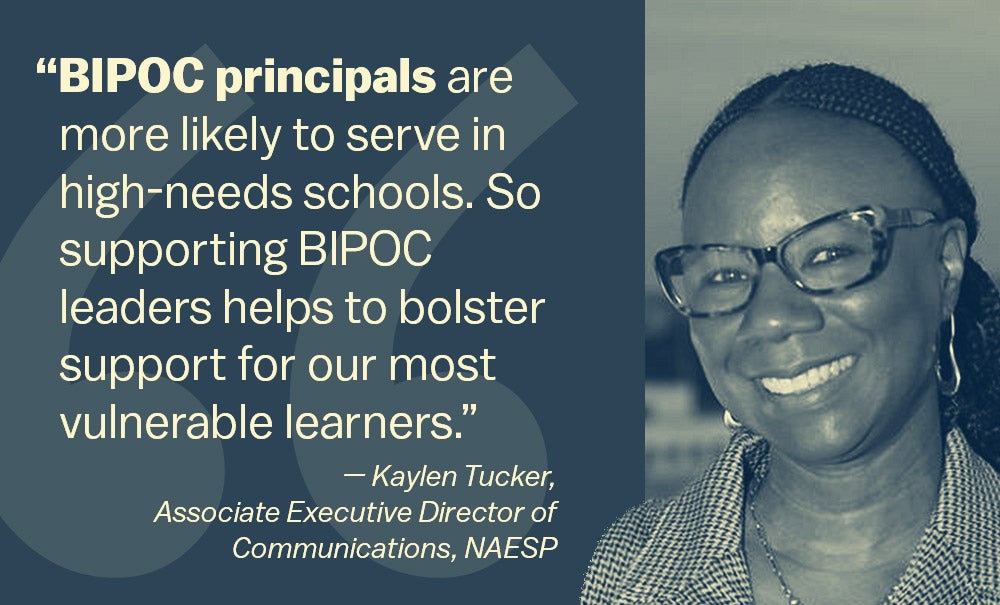A milestone moment in federal funding to shrink the academic opportunity gap between kids from poor and wealthier families took place in 1965, when President Lyndon Baines Johnson sat beside “Miss Kate” Deadrich Loney, his first schoolteacher, and signed the Elementary and Secondary Education Act (ESEA). Since then, a progression of ESEA reauthorizations and other federal measures, such as Race to the Top, has sought the same goal.
So, why do the gaps persist?
That was the question posed by political scientist Paul Manna recently when he addressed an audience of people with a stake in the answer, the ESSA Leadership Learning Community. That’s “ESSA” as in the “Every Student Succeeds Act” of 2015, the latest version of the law LBJ put his signature to more than half a century ago.
The ESSA Leadership Learning Community comprises representatives from 10 states that are working to use part of their federal funding to develop the type of leadership by principals and other educators needed to turn around the lowest-performing schools. Members of the group, which is supported by Wallace and managed by the Council of Chief State School Officers, the Council of the Great City Schools and the National Urban League, met in New York City recently, at one of their periodic gatherings to discuss their progress and exchange ideas.
Manna’s starting point, which he described in greater detail at another Wallace gathering earlier this year, was that education reform too often stumbles because of a major oversight. Specifically, reform plans often spell out big aims and intended changes, while failing to reckon with the details of implementation.
“Adopting a set of goals says nothing about how they will actually be carried out,” Manna said. He urged the audience to understand—and respond to—the “critical tasks” their plans entail, offering a series of questions policy designers can ask to help them connect their plans to the ground-level work required to help put them into action. What follows is a lightly edited version of Manna’s seven sets of questions:
- Key implementers. What people or organizations will need to adapt their work if implementation is to proceed?
- New tasks. What new tasks will the key implementers have to do?
- New tasks in relation to current work. Is there evidence that the key implementers are already doing these tasks as part of current jobs? If so, is there also:
- evidence that they are doing these tasks well?
- evidence of what is leading to that success? If not, what is standing in the way of the implementers doing these tasks well?
- System support for new tasks. If the reform plan requires implementers to do new tasks (or do old tasks in fundamentally new ways), what evidence is there that the institutions in which they work (e.g., schools, districts, state agencies) have the management and communication systems to support them in the new tasks? If the institutions lack the systems, what is the reason, and how has the plan accounted for that?
- Competing tasks. What responsibilities beyond the tasks demanded by the reform plan do the key implementers have? What’s the likelihood that the new tasks will become priorities for the implementers? If the new tasks are likely to struggle to be a priority for implementers, how can the reform plan address that (e.g., eliminating old tasks to make space for the new ones)?
- Feedback loops. How has the plan built in processes or systems to ensure that implementers can provide feedback to planners as they carry out the new tasks? What mechanisms does the plan include to receive this information so plans can adapt in light of new information or realizations that some of the assumptions built into the plan were incorrect?
- Developing a sense of mission around new tasks. What steps does the plan include to ensure continued enthusiasm and support for the new tasks within the implementers’ organizations?
“Education reform plans that seem good in theory are a dime a dozen. More rare, though, are plans that can actually withstand the reality check they encounter when implementers on the ground begin to put them into practice,” Manna said in an email following the gathering. “When planners attend to the real world of practice, they will increase the chances that their plans will actually change schools for the better rather than simply creating a lot of messes for principals and their teams to clean up."
For more information on using ESSA funds for school leadership efforts, see this report.
Manna, the Hyman Professor of Government at William & Mary, is the author of a Wallace-commissionedreport, Developing Excellent School Principals to Advance Teaching and Learning: Considerations for State Policy, examining levers states can pull to bolster principal effectiveness.




